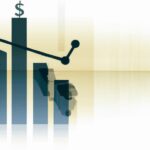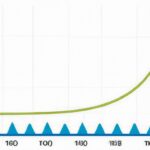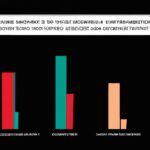Various methods exist to assess inequality beyond just income distribution. Educational opportunities, health outcomes, and social mobility are encompassed in alternative measures, offering a broader perspective. These metrics spotlight disparities overlooked by traditional income-based measures, unveiling a more comprehensive picture of societal inequality. By scrutinizing factors beyond financial status, a richer understanding of disparity emerges, highlighting areas for targeted intervention. This approach acknowledges the multidimensional nature of inequality, illustrating its nuanced presence in diverse aspects of life. Embracing alternative measures empowers policymakers to craft more holistic and effective strategies in addressing the intricate web of inequality. Through these lenses, societal disparities can be identified, analyzed, and eventually mitigated, fostering a more equitable society for all.
Table of Contents
- Application and relevance of alternative measures
- Concept of inequality
- Criticism of traditional measures
- Pros and cons of alternative measures
- Types of inequality measures
(Income and Wealth Inequality: Crash Course Economics #17)
Alternative measures of inequality provide additional insight into economic disparities beyond traditional metrics like the Gini coefficient. These alternative methods showcase the distribution of resources within a society using various approaches such as the Palma ratio or the Atkinson index. By incorporating different perspectives, we can better understand the complexities of income and wealth gaps. The Palma ratio focuses on the income share of the top 10% compared to the bottom 40%, highlighting extreme levels of inequality. Meanwhile, the Atkinson index considers how economic growth benefits different segments of the population, shedding light on policies that can promote more equitable outcomes. These alternative measures complement conventional measurements, offering a more comprehensive view of societal disparities. Emphasizing the importance of addressing inequality from multiple angles, they contribute to designing effective interventions and policies to promote greater economic equity. As we strive for a fairer and more inclusive society, leveraging a diverse set of inequality measures can empower policymakers and advocates to create meaningful change. Through a nuanced understanding of inequality, we can work towards building a more just and sustainable future for all.
Application and relevance of alternative measures
When delving into the realm of alternative measures in understanding inequality, it’s like embarking on a journey through uncharted territories, where traditional metrics fall short and fail to capture the full breadth of disparities. These innovative approaches offer a fresh perspective, shedding light on nuances that were previously obscured by conventional methods.
One such avenue is the application and relevance of alternative measures. Picture this – you have a bustling marketplace teeming with vendors selling their wares; some stalls are overflowing with goods while others struggle to make ends meet. In this dynamic setting, conventional income-based assessments might paint a generic picture of wealth distribution, overlooking the intricate differences among these merchants. Here’s where alternative measures step in.
By considering factors beyond mere monetary values – like access to education, healthcare services, or social capital – we start unraveling the complex web of inequalities woven into society’s fabric. These unconventional yardsticks provide us with a kaleidoscopic view of disparity, revealing how individuals navigate hurdles based not just on financial status but also on opportunities available to them.
Take for instance Jane and Michael; both work at the same company and earn identical salaries. On paper, they seem equally positioned in terms of income level. However, when we factor in Jane’s student debt burden from pursuing higher education compared to Michael who received scholarships for his studies, a new dimension emerges. Alternative measures help us recognize that despite similar paychecks, Jane faces different challenges due to her educational background.
The relevance lies not only in identifying these subtle variations but also in crafting targeted interventions that address specific needs arising from diverse circumstances. By incorporating alternative metrics into policy-making frameworks, policymakers can tailor initiatives towards bolstering areas where inequities manifest most starkly.
Imagine walking down two parallel paths: one illuminated by standard indicators like Gini coefficients and quintile ratios while the other is lit up by these novel gauges capturing intangible facets of inequality dynamics – which path would lead us closer to fostering inclusive societies? It’s clear that embracing alternative measures is key to broadening our comprehension of inequality landscapes and steering towards more equitable outcomes for all members of our community.
Concept of inequality
The concept of inequality is a stark reality that permeates societies worldwide, casting shadows on the inherent fairness we all aspire to. As we delve into alternative measures of inequality, we are confronted with the harsh disparities that exist among individuals in terms of wealth, opportunities, and social status.
Inequality manifests itself in multifaceted ways, leaving indelible imprints on our collective consciousness. It is not merely about the uneven distribution of resources but also reflects deeply entrenched power dynamics that dictate who thrives and who languishes on the fringes of society. The palpable divide between the haves and have-nots serves as a sobering reminder of the systemic injustices woven into the fabric of our social structures.
Exploring alternative measures of inequality unveils a nuanced narrative beyond conventional metrics like income or educational attainment. It compels us to scrutinize how privilege and disadvantage intertwine to shape people’s life trajectories. The interplay of race, gender, and class further complicates this landscape, painting a complex picture where intersecting identities amplify or mitigate individuals’ experiences within society.
Emotions run high when confronting such glaring inequities; feelings of anger, frustration, empathy, and solidarity collide in our hearts as we grapple with the profound implications of unequal distributions of resources. This emotional turbulence fuels movements for social justice and galvanizes communities to bridge divides through collective action.
Alternative measures offer fresh perspectives on inequality by highlighting invisible barriers that perpetuate marginalization across various axes – be it disability status or geographic location. By shining a spotlight on these overlooked dimensions of disparity, we underscore the urgency of dismantling structural barriers that inhibit equitable access to resources and opportunities for all members of society.
As we navigate this terrain fraught with complexity and contradictions, one thing remains clear: addressing inequality demands more than statistical analyses; it necessitates an empathetic understanding rooted in human experiences. Behind every data point lies a story untold – stories marked by resilience in the face of adversity or stifled potential due to systemic neglect.
In conclusion,
the concept
of inequality
is not just
an abstract notion;
it is lived reality
for millions worldwide.
By embracing diverse perspectives
and amplifying marginalized voices,
we inch closer towards creating
a world where equity reigns supreme,
and every individual finds their place
in the tapestry
of human existence.
Criticism of traditional measures
When it comes to discussing alternative measures of inequality, criticism of traditional measures inevitably arises like a storm on the horizon. The conventional metrics often fail to capture the full spectrum of disparities that exist in our complex society.
One major critique leveled against traditional measures is their over-reliance on economic indicators such as income or wealth. While these factors are undoubtedly important, they only provide a narrow glimpse into the lives of individuals and communities. Inequality extends far beyond monetary values; it encompasses access to education, healthcare, social resources, and opportunities for advancement.
Moreover, traditional measures tend to homogenize diverse populations under broad categories, obscuring the unique challenges faced by different groups. By lumping everyone together based solely on economic criteria, these metrics erase crucial nuances that could inform more targeted interventions to address inequality effectively.
Another glaring flaw in traditional measures is their failure to account for historical injustices and structural barriers that perpetuate inequality across generations. Ignoring this aspect not only distorts the true extent of disparities but also hinders efforts to implement policies that can redress long-standing systemic inequalities.
Furthermore, critics argue that conventional measures lack sensitivity to cultural differences and varying perceptions of well-being within different communities. What may be considered essential for one group might hold little significance for another. This subjective dimension is often overlooked in traditional calculations of inequality.
In essence, the shortcomings of traditional measures underscore the urgent need for more holistic approaches that take into account a broader range of factors influencing people’s lived experiences. Only by embracing alternative metrics can we hope to paint a more accurate picture of inequality and devise strategies that truly uplift those most marginalized in our society.
As we navigate through these criticisms and reflect on how best to measure and combat inequality effectively, let us heed the call for greater inclusivity, nuance, and compassion in our approach – because behind every statistic lies a human story waiting to be heard and understood.
(Alternative Measures of Income Inequality)
Pros and cons of alternative measures
When delving into the realm of alternative measures for inequality, a myriad of perspectives emerge. These methods offer fresh insights but also pose challenges that demand scrutiny.
One significant advantage of alternative measures lies in their ability to capture nuances traditional metrics may overlook. By diversifying our toolbox, we can paint a more detailed portrait of societal disparities. For instance, while conventional indices like the Gini coefficient provide valuable data on income distribution, they often fail to consider factors such as access to healthcare or educational opportunities. Alternative measures step in to bridge this gap by offering holistic views that encompass various dimensions of well-being.
Moreover, these alternative approaches foster inclusivity by amplifying voices frequently marginalized in standard analyses. They shine a spotlight on underrepresented groups whose experiences are essential for understanding the true extent of inequality. Through methodologies like intersectional analysis, which considers how multiple forms of discrimination intersect and compound each other, we gain deeper insights into systemic inequities that might otherwise remain concealed.
However, amidst these benefits lurk certain pitfalls inherent to alternative measures. One common challenge is the complexity they introduce into an already intricate landscape. While traditional indices offer straightforward comparisons and easy-to-grasp results, some alternatives require advanced statistical knowledge or sophisticated models to interpret accurately.
Furthermore, the proliferation of diverse measures can lead to fragmentation within academic discussions and policymaking circles. As scholars advocate for different frameworks and policymakers grapple with conflicting findings from various methodologies, achieving consensus becomes increasingly arduous.
Despite these drawbacks, it is crucial not to dismiss alternative measures outright but instead approach them with a critical yet open-minded attitude. By navigating the terrain between innovation and convention thoughtfully, we stand poised to harness the full potential of these tools in crafting more nuanced strategies for combating inequality across all its dimensions.
Types of inequality measures
When examining alternative measures of inequality, it’s crucial to delve into the various types of inequality measures that shed light on disparities in society. From Gini coefficients to Theil index and Atkinson index, each measure offers a distinct perspective on income distribution.
The Gini coefficient stands out as one of the most widely used metrics to gauge inequality. It ranges from 0 (perfect equality) to 1 (maximum inequality). Picture a graph displaying income levels across a population – the closer this curve is to perfect equality, the lower the Gini coefficient will be.
On the other hand, Theil index provides insight into relative deprivation within specific subgroups. This metric doesn’t just focus on overall wealth disparity but zooms in on how different segments of society compare with each other. By shining a spotlight on intra-group inequalities, policymakers can tailor interventions more effectively.
Meanwhile, the Atkinson index introduces an interesting twist by considering societal aversion to inequality. Unlike some measures that remain neutral about distribution patterns, the Atkinson index factors in preferences for fairness or egalitarianism when assessing disparities among individuals.
Imagine a community where wealth isn’t concentrated solely at the top but distributed more evenly across its members based on their needs and contributions. Such scenarios reflect lower scores under certain inequality indices compared to situations where resources are highly unevenly divided amongst people – sparking discussions around justice and social welfare policy implications.
These diverse approaches underscore how multifaceted measuring concepts surrounding economic parity truly are: they’re not just about numbers but also embody ethical values and philosophical beliefs regarding fairness within communities. In essence, they encapsulate our collective aspirations for a more equitable world where everyone has access to opportunities regardless of their background or circumstances.
As we navigate through these intricate frameworks of evaluation, we must remember that behind every statistic lies real lives impacted by systemic injustices or empowered through inclusive policies championed for greater equity – evoking sentiments ranging from empathy towards those marginalized voices striving against odds stacked high against them; hope inspired witnessing progress achieved concrete action plans aimed helping bridge gaps obstructing pathways upward mobility fulfillment potential intrinsic human dignity all individuals deserve aspire toward realizing fullest selves possible given constraints present times ever-changing landscapes global economy today tomorrow shaping realities unfolding before us eyes heart interconnectedness shared destiny woven together fabric societies bound common thread yearning brighter futures upcoming generations yet unborn grappling challenges ahead learning past mistakes forging new paths forward united purpose creating better world tomorrow rest secure foundations laid today building upon strengths weaknesses learn grow evolve adapt perseverance resilience determination drive push boundaries expand horizons reach heights previously deemed unattainable unveiling truths hidden shadows discovering treasures buried beneath surface revealing depths richness diversity complexity awaiting exploration understanding appreciation celebration unfold mysteries universe unravel secrets unfathomable exploring infinite possibilities exist enigmatic tapestry life intertwined stories waiting told destinies yet fulfilled timeless saga continues journey never-ending quest knowledge wisdom enlightenment peace harmony transcending barriers divisions connecting hearts souls minds unified pursuit truth beauty goodness kindness compassion grace love lights guiding way luminous beacon darkness igniting flames passion creativity innovation transform shape mold sculpt worlds anew visions born struggles overcome dreams realized aspirations attained triumphs victories battles fought lost won standing together shoulder shoulder comrades companions fellow travelers voyage discovery self-discovery uncovering rediscovering redefining identities rewriting narratives eternal legacy passed down generations eternity echo resounding chambers time immemorial resonating chords symphony existence echoing throughout eternities forevermore end beginning endless cycle rebirth renewal regeneration recalibration equilibrium order chaos dance cosmos cosmic ballet orchestrated harmonious melodies sung choir angels ethereal spirits entwined mortal beings fleeting moments ephemeral whispers wind gently caressing skin tingling sensations reverberate soul quivering ecstasy divine bliss radiating energy pulsating vibrations frequency tuning higher planes consciousness transcendence metamorphosis cocoon emerging butterfly liberation freedom flight soar skies vast expanse infinity boundless limitation reaching soaring heights touching heavens bathing sunlight basking warmth embrace celestial glow radiance divine luminescence emanating core being illuminates path trailblazing ventures bold daring fearless unstoppable relentless unwavering faith belief propels onward upward beyond wildest imagination wild untamed adventurous explorers wandering seekers purpose meaning significance questing seeking searching finding losing gaining experiencing everything unseen invisible intangible palpable solid grounded rooted earth air breathe fire ignite spirit water nourish seeds planted soil growth blossoms flourish bloom radiant flowers bursting colors aromas smells enchanting senses tantalizing taste buds savor delights savory flavors culinary feasts fit kings queens gods goddesses indulgence decadent pleasures dining tables laden abundance bounty fruits labor joys sorrows mingle tears laughter joy happiness festivity carnival jubilation merriment dancing singing rejoicing songs anthems hymns ringing ears awakening stirring depths emotions reservoir overflowing gushing rivers rapids torrents cascading falls crashing waves ocean roars thunderstorms lightning strikes electrifying atmospheres charged electricity magnetism attraction drawing captivated enraptured enchanted spellbound beguiled bewitched entranced mesmerized hypnotized seduced allure charms lures temptations pleasures hedonistic paradise utopia nirvana haven sanctuary refuge solace serenity tranquility calm peaceful oasis midst storms turmoil chaos madness frenzy whirlwind cycl













